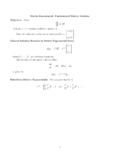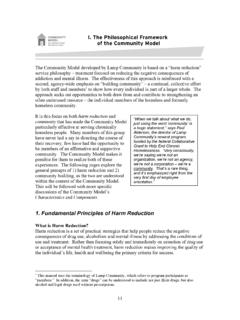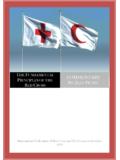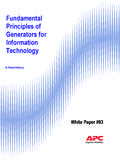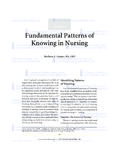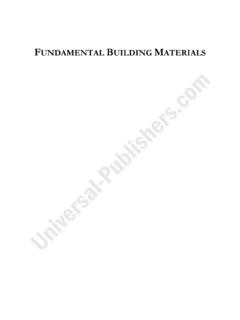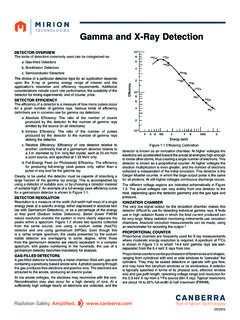Transcription of Linear and Switching Voltage Regulator Fundamental Part 1
1 LM2940,LM2990,LM2991,LM309,LM317,LP2951, LP2952,LP2953,LP2954 Linear and Switching Voltage Regulator Fundamental part 1 Literature Number: SNVA5581 National SemiconductorChester Simpson Member of Technical StaffPower Management ApplicationsLINEAR Voltage REGULATORSI ntroductionThe Linear Regulator is the basic building block of nearly every power supply used inelectronics. The IC Linear Regulator is so easy to use that it is virtually foolproof, andso inexpensive that it is usually one of the cheapest components in an paper will present information that gives the user greater understanding of howa Linear Regulator works, and will help to de-mystify Regulator specifications andapplications.
2 Some typical circuits will be presented to highlight the commercial regulators that arecurrently available. The primary focus of the new product examples is in the area ofLow-dropout regulators , which offer great advantages over standard regulators inmany applications. Linear and Switching VoltageRegulator FundamentalsAbstractThis paper will enable the user to understand the operation of Switching and linearvoltage regulators . The most commonly used regulating modes will be Linear regulators , the Standard, Low-Dropout, and Quasi Low-Dropoutregulators will be covered (along with circuit examples).In the Switching Regulator section, the Buck, Buck-boost, Boost, and Flybacktopologies will be detailed.
3 Some examples will be given of products available forthe design and implementation of Switching Voltage Regulator OperationIntroductionEvery electronic circuit is designed to operate off of some supply Voltage , which isusually assumed to be constant. A Voltage Regulator provides this constant DCoutput Voltage and contains circuitry that continuously holds the output Voltage at thedesign value regardless of changes in load current or input Voltage (this assumesthat the load current and input Voltage are within the specified operating range forthe part ).The Basic Linear Regulator A Linear Regulator operates by using a Voltage -controlled current source to force afixed Voltage to appear at the Regulator output terminal (see Figure 1).
4 The control circuitry must monitor (sense) the output Voltage , and adjust the currentsource (as required by the load) to hold the output Voltage at the desired value. Thedesign limit of the current source defines the maximum load current the regulatorcan source and still maintain output Voltage is controlled using a feedback loop, which requires some type ofcompensation to assure loop stability. Most Linear regulators have built-incompensation, and are completely stable without external components. Someregulators (like Low-Dropout types), do require some external capacitanceconnected from the output lead to ground to assure Regulator characteristic of any Linear Regulator is that it requires a finite amount of timeto "correct" the output Voltage after a change in load current demand.
5 This "time lag"defines the characteristic called transient response, which is a measure of how fastthe Regulator returns to steady-state conditions after a load SourceI(v)FIGURE 1. Linear Regulator FUNCTIONAL DIAGRAM3 Control Loop OperationThe operation of the control loop in a typical Linear Regulator will be detailed usingthe simplified schematic diagram in Figure 2 (the function of the control loop issimilar in all of the Linear Regulator types).The pass device (Q1) in this Regulator is made up of an NPN Darlington driven by aPNP transistor (this topology is a Standard Regulator , as detailed in the followingsection).
6 The current flowing out the emitter of the pass transistor (which is also theload current IL) is controlled by Q2 and the Voltage error amplifier. The currentthrough the R1, R2 resistive divider is assumed to be negligible compared to theload feedback loop which controls the output Voltage is obtained by using R1 and R2to "sense" the output Voltage , and applying this sensed Voltage to the inverting inputof the Voltage error amplifier. The non-inverting input is tied to a reference Voltage ,which means the error amplifier will constantly adjust its output Voltage (and thecurrent through Q1) to force the voltages at its inputs to be equal.
7 The feedback loop action continuously holds the regulated output at a fixed valuewhich is a multiple of the reference Voltage (as set by R1 and R2), regardless ofchanges in load is important to note that a sudden increase or decrease in load current demand (a"step" change in load resistance) will cause the output Voltage to change until theloop can correct and stabilize to the new level (this is called transient response). The output Voltage change is sensed through R1 and R2 and appears as an "errorsignal" at the input of the error amplifier, causing it to correct the current through DEVICEERRORAMPRQ1LR1R2 FIGURE 2.
8 DIAGRAM OF A TYPICAL Linear REGULATOR4 Linear Regulator Types (LDO, Standard, and Quasi-LDO) There are three basic types of Linear Regulator designs which will be covered: Standard (NPN Darlington) Regulator Low Dropout or LDO Regulator Quasi LDO RegulatorThe single most important difference between these three types is the dropoutvoltage, which is defined as the minimum Voltage drop required across theregulator to maintain output Voltage regulation. A critical point to be consideredis that the Linear Regulator that operates with the smallest Voltage across itdissipates the least internal power and has the highest efficiency.
9 The LDOrequires the least Voltage across it, while the Standard Regulator requires the second important difference between the Regulator types is the ground pincurrent required by the Regulator when driving rated load current. The Standardregulator has the lowest ground pin current, while the LDO generally has thehighest (differences between the types is detailed in the following sections). Increased ground pin current is undesirable since it is "wasted" current, in that itmust be supplied by the source but does not power the STANDARD (NPN) REGULATORThe first IC Voltage regulators made used the NPN Darlington configuration for thepass device, and are designated as the Standard Regulator (see Figure 3).
10 An important consideration of the Standard Regulator is that to maintain outputregulation, the pass transistor requires a minimum Voltage across it given by: VD(MIN) = 2 VBE + VCE (Standard Regulator ) VINVOUTVREFFIGURE 3. STANDARD (NPN) REGULATOR5 Allowing for the -55 C to +150 C temperature range, this minimum voltagerequirement is usually set at about to 3V by the manufacturer to guaranteespecified performance Voltage where the output actually falls out of regulation (called the dropoutvoltage) will probably be somewhere between and for a Standardregulator (it is dependent on both load current and temperature).











